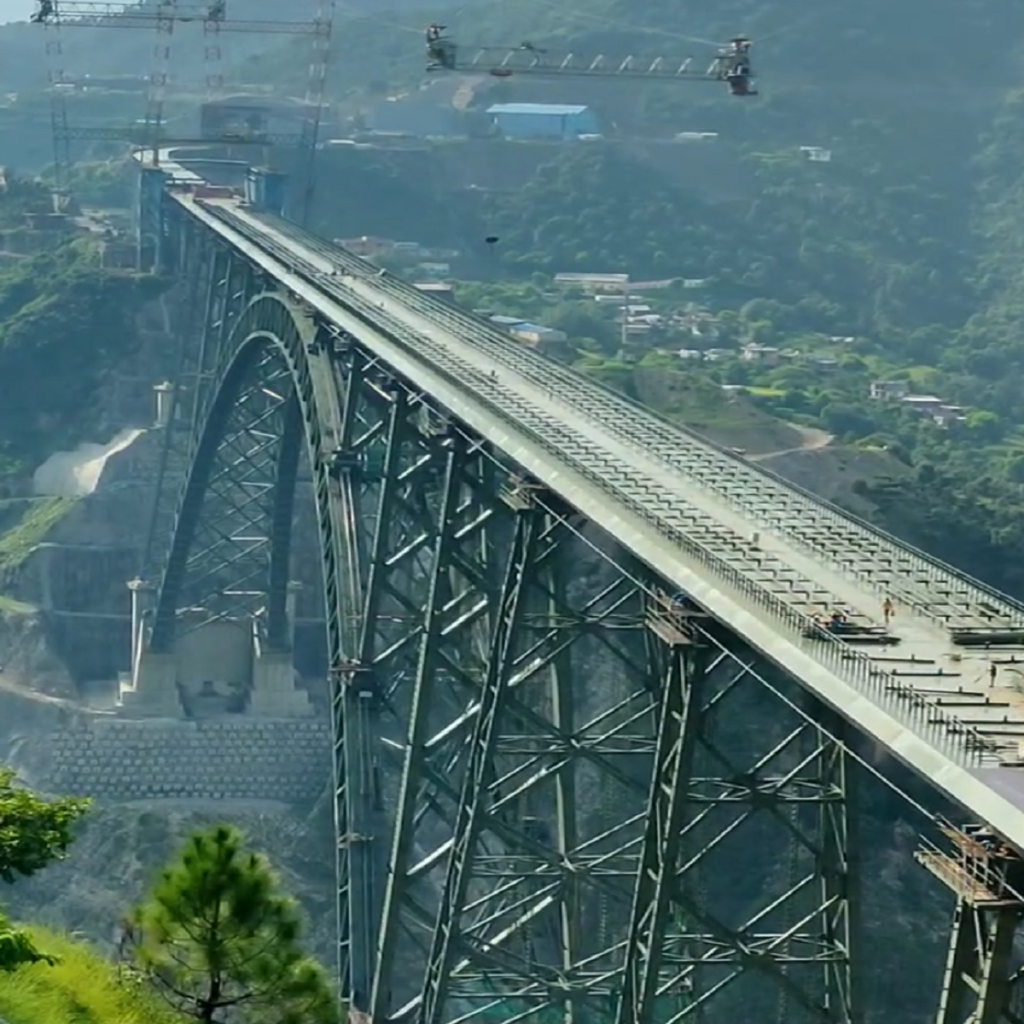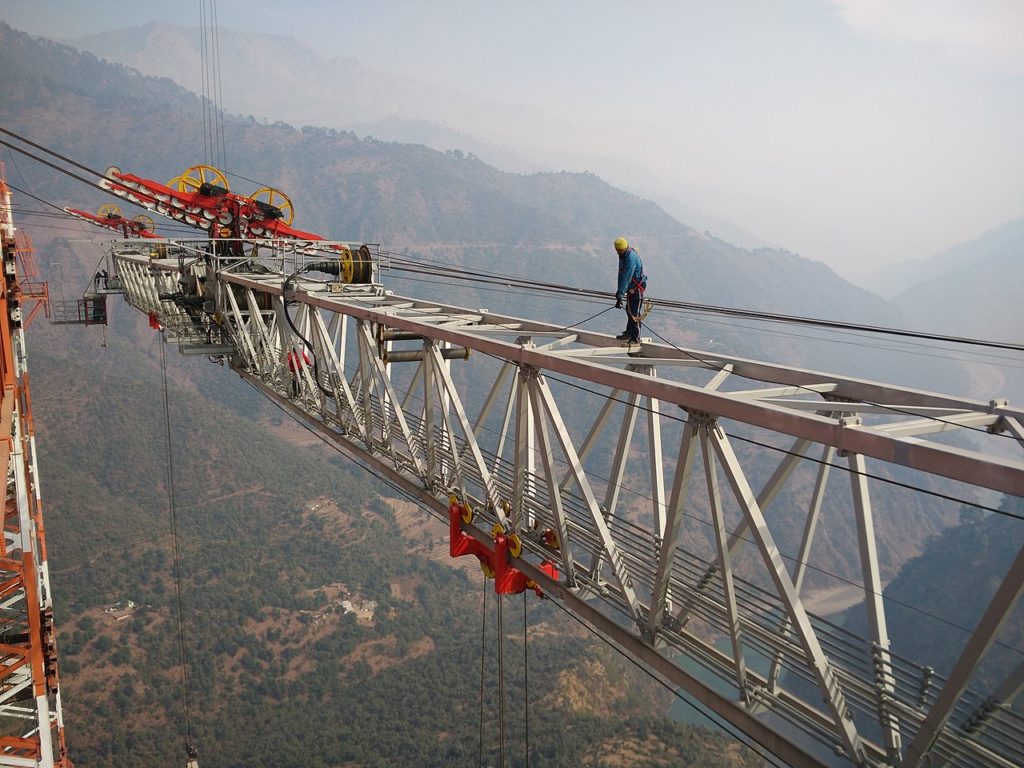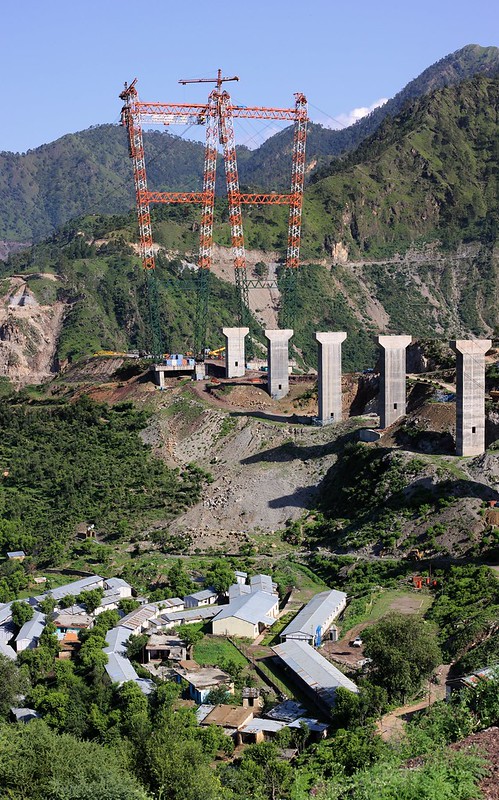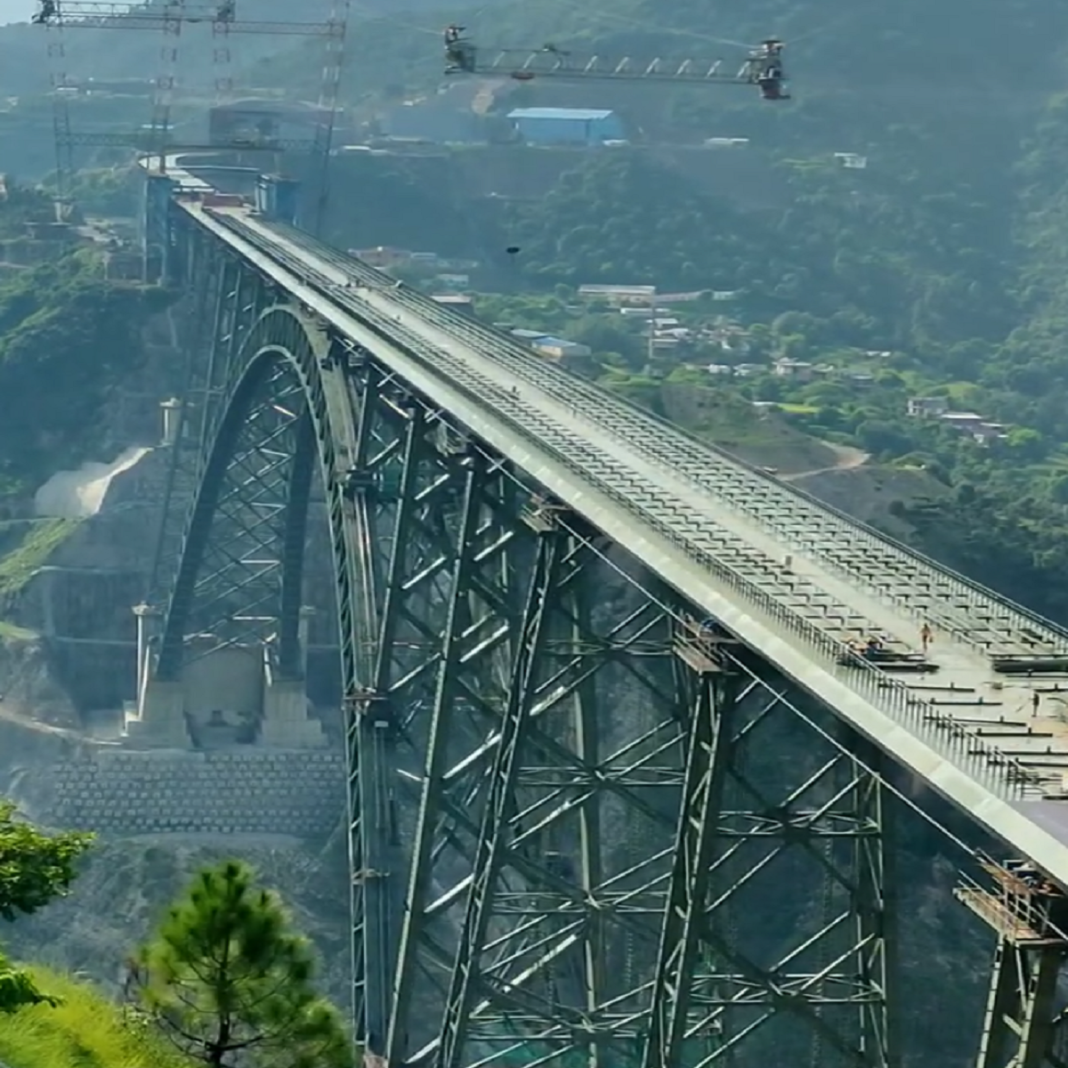The Chenab Rail Bridge is a steel and concrete arch bridge between Bakkal and Kauri and just 42 km from the main Reasi town in the Reasi district of Jammu and Kashmir, India. The bridge spans the Chenab River at a height of 359 m above the river, making it the world’s highest rail bridge. In November 2017, the base supports were declared completed allowing for the start of the construction of the main arch. The bridge was fully completed and was inaugurated in August 2022.

After many deliberations, taking into account aesthetics, economy, and availability of local expertise and construction materials, the Chenab Rail Bridge was designed as a large-span single-arch steel bridge with approach viaducts on either side. The arch is two-ribbed, fabricated from large steel trusses. The chords of the trusses are sealed steel boxes, internally stiffened and filled with concrete to assist in controlling wind-induced forces on the bridge. Another advantage of concrete filling is that internal painting will not be required.

The number of bearings has been minimized, particularly on the approach viaduct, through the use of continuous construction. This is advantageous, as it reduces the maintenance and inspection efforts, and improves the riding quality. The viaduct piers are of concrete, while the piers near the arch are Indian construction standards.
The Chenab Rail Bridge was originally intended to be completed in December 2009. However, in September 2008, the project was halted due to fears over the bridge’s stability and safety. Work on the bridge restarted in 2010, with the plan to complete it in 2015.

In April 2021, the Chenab Rail Bridge’s arch was completed and the overall bridge was completed in August 2022. It is expected to open to rail traffic in December 2022.
Key technical data of the bridge include:
- Deck height (height above river bed): 359 m, (height above river surface): 322 m
- Bridge length: 1,315 m, including the 650 m long viaduct on the northern side
- Arch span: 467 m
- Arch length: 480 m
The design and construction were awarded to Afcons Infrastructure, a part of the Shapoorji Pallonji Group, the third-largest construction group in India, with the help of IISc Bangalore. Major construction decisions were taken by Konkan Railway Corporation. The Defence Research and Development Organisation (DRDO) helped in the design of the bridge, making it blast-proof using special steel.
According to Wikipedia















